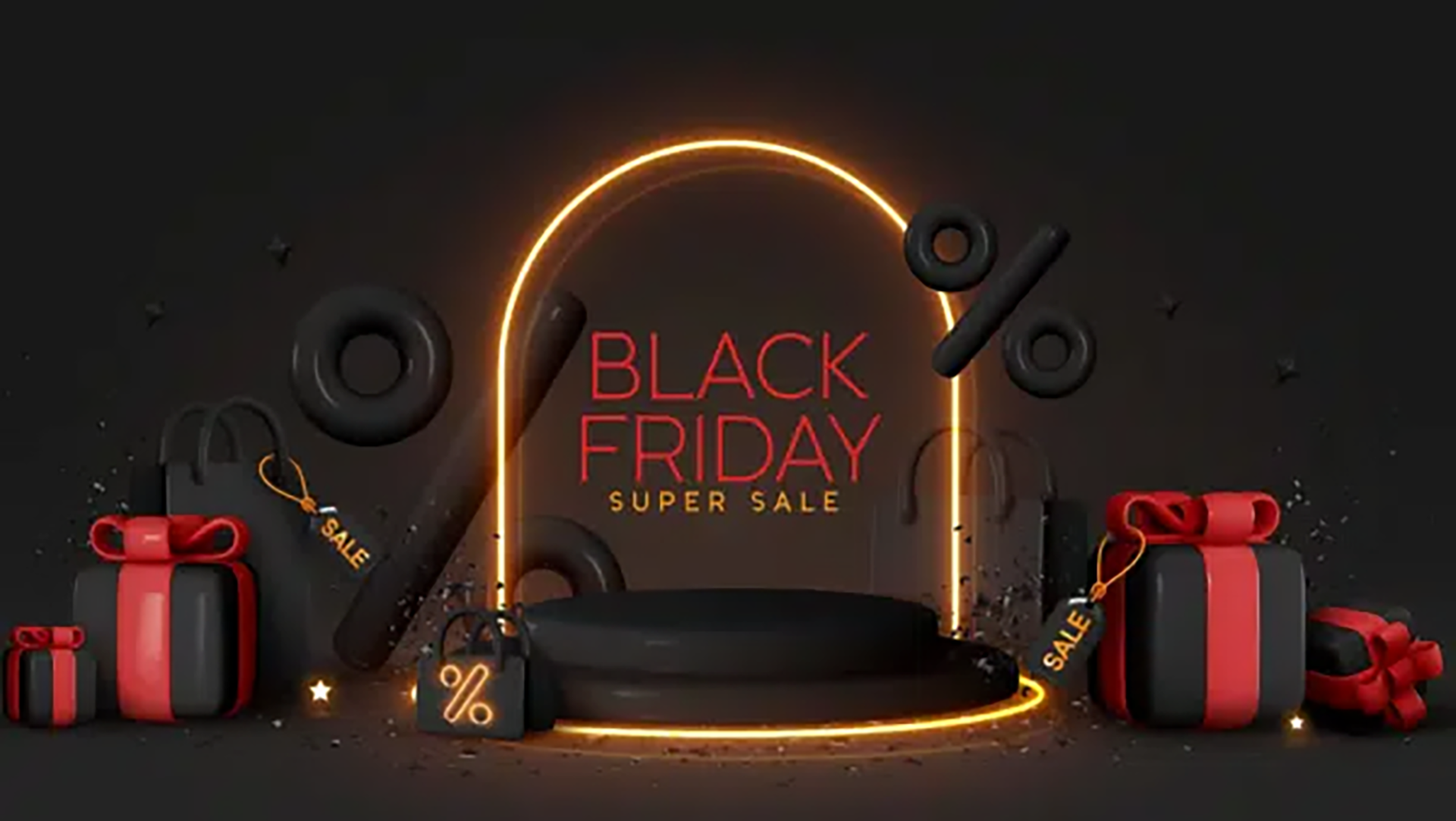5 Black Friday trends marketers can act on this holiday season
42% of consumers begin holiday shopping on Black Friday or later, one study found. Here’s what marketers can do to capitalise.
Holiday shopping will soon begin — officially — the Friday after Thanksgiving, a.k.a. Black Friday. And despite fears of economic slowdowns and lingering inflation, the holiday season is expected to be a boon for retailers. Holiday spending is projected to be up between 3% and 4% over 2022, according to the National Retail Federation.
Here are the trends we’re watching for Black Friday and throughout the rest of the ever-expanding holiday calendar. Consumers are looking to spend, and it’s not too late for marketers to act.
Black Friday continues to be relevant for shoppers
Significant promotional periods earlier in the year have influenced gift-shoppers. For instance, Amazon Prime Big Deal Days drove sales in October.
How are holiday shoppers processing this change in the calendar?
Nearly half (42%) of consumers will begin their holiday shopping on Black Friday or later, according to a survey by research firm Cint.
Cint found that:
- 23% begin in October
- 22% begin on Black Friday and
- 20% begin in December.
And 22% of shoppers rely on ecommerce sales days like Prime Day for all of their holiday shopping, while 40% say they rely on those days to complete approximately half of holiday purchasing.
That leaves a lot of opportunity on Black Friday, especially for smaller local businesses.
Also, don’t forget about the post-holiday season and where shoppers discuss their #hauls. Shopping-related videos increase on TikTok after Christmas well into January.
Perks influence social commerce shoppers
Social media marketers know that certain categories like beauty and home goods lend themselves to shareable posts and brand love. With more seamless buying experiences, social buzz can also be converted into social commerce, especially in these categories.
Perks like limited-time offers and free shipping also are attractive to certain segments of social commerce shoppers.
A survey of U.S. consumers by The Influencer Marketing Factory found that:
- Shoppers ages 18-34 purchase via social commerce for limited-time offers, whereas users 35+ are incentivised by free shipping.
- Apparel, beauty products, and home products account for 60% of all social commerce purchases, a 25% increase from 2021
- Facebook and Instagram Shops were top-rated by responders for social commerce experience, and Facebook Shop ranked #1 for checkout experience.
Consider these top social commerce destinations if you have some holiday budget left — certainly if you’re in apparel, beauty or home products.
“Social media is on the rise, especially for product discovery, so it should be part of this years’ strategy,” said Fernando Angulo, senior market research manager at online research company Semrush. “Incorporating social media ads that target specific individuals, personalized email marketing promotions, as well as optimizing mobile web browsing for easy shopping, are other good tactics to keep in mind.”
Customers want to know about social responsibility
Social media is also a great channel to communicate to shoppers about important themes beyond individual products. Increasingly, they want to know about your business’s social responsibility.
“The brands who will win Black Friday this year are the ones who will stand out through social responsibility,” said Angulo. “Consumers are becoming more conscious of what brands are doing to show their support for what matters to them the most. Brands can gain loyalty from ethical-conscious customers by coordinating promotions that demonstrate their social responsibility or sustainability strategies.”
Email design connects with customers for the holidays
Your customers’ inboxes are more cluttered than ever, especially around the holidays. This shouldn’t deter you from making an impact with thoughtfully designed emails.
“Carefully craft compelling subject lines and preheaders that work together to get their attention,” said Kath Pay, CEO at Holistic Email Marketing and a MarTech contributor.
Email design that uses psychological insights can persuade shoppers on their ecommerce customer journey. A well-designed email is also a great way to jump-start a relationship with lapsed customers.
For lapsed customers, create a ramp-up schedule to slowly and carefully warm the IPs for increased volumes — both in volume [of emails] and cadence, said Pay.
“Customers are expecting to receive great deals from you, and there is increased competition year-on-year, so do your best to stand out in the crowd by making it all about them,” Pay said.
In-store or online? Customers want both
Black Friday began as an in-store kickoff to holiday sales. Then came Cyber Monday and Cyber Week promotions, to feed the desire for holiday sales when shoppers returned to their computers.
This year, shoppers will be looking to visit in-person, as well as buy online.
A recent consumer survey by marketing automation company Klaviyo found that 45% of consumers prefer online buying, while 20% prefer in-store. Most notably, 35% had no preference.
Here’s a further breakdown:
- Strongly prefer in-store (10%)
- Slight prefer in-store (10%)
- No preference (35%)
- Slightly prefer online shopping (20%)
- Strongly prefer online shopping (25%)
Only about a third of consumers strongly prefer either online or in-store shopping. For everybody else, marketers have a wide range of strategies they can use.
Black Friday remains a pivotal moment for retailers, offering immense opportunities to boost sales and engage customers. This year, key trends are shaping the landscape, from early shopping patterns to the rise of social commerce. Ready to maximise your holiday sales? Contact Holistic Email Marketing today for expert strategies to capitalise on Black Friday trends and drive your marketing success.

